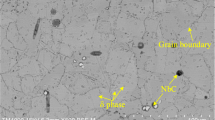Abstract
Over the last years, edge preparation techniques have become more common in tools industry. The shape, radius and surface finish of the tool edge play a significant role in the machining process. There are different edge preparation techniques, and each of them impacts differently on final microgeometry and, therefore, determinates its performance. In this work, two different edge conditions were applied on solid end mills. A detailed analysis of the preparation processes is presented, with the resulting form, radius and edge roughness of the tools. The materials, responsible for the edge preparation, are also presented. Finally, tool life tests and roughness analysis after dry and minimal quantity of lubricant (MQL) milling were carried out. From the presented results, it is possible to have more information on how the edge preparation processes can change the tool surface and the analysis makes also possible observing the interaction between the state of the edge and the application of MQL.










Similar content being viewed by others
References
Rodriguez CJC (2009) Cutting edge preparation of precision cutting tools by applying micro-abrasive jet machining and brushing. Doctoral thesis, Kassel University, Germany
Wyen CF (2011) Rounded cutting edges and their influence in machining titanium. Ph.D. Thesis, ETH Zürich, Germany
Risse K (2006) Einflüsse von Werkzeugdurchmesser und Schneidkantenverrundung beim Bohren mit Wendelbohrern in Stahl. Ph.D. Thesis, RWTH Aachen, Germany
Heckmann L (2010) Systematische Analyse der Schneidkantenarchitektur Mithilfe der Finite-Elemente-Methode. Ph.D. Thesis, Kassel University, Germany
Bouzakis KD, Bouzakis E, Kombogiannis S, Makrimallakis S, Skordaris G, Michailidis P, Charalampous P, Paraskevopoulou R, M’Saoubi R, Aurich JC, Barthelm F, Biermann D, Denkena B, Dimitrov D, Engin S, Karpuschewski B, Klocke F, Zel T, Poulachon G, Rech J, Schulze V, Settineri L, Srivastava A, Wegener K, Uhlmann E, Zeman P (2014) Effect of cutting edge preparation of coated tools on their performance in milling various materials. CIRP J Manuf Sci Technol 7:264–273
Ulutan D, Ozel T (2011) Machining induced surface integrity in titanium and nickel alloys: a review. Int J Mach Tools Manuf 51:250–280
Fulemova J, Janda Z (2014) Influence of the cutting edge radius and the cutting edge preparation on tool life and cutting forces at inserts with wiper geometry. Proc Eng 69:565–573
Denkena B, Biermann D (2014) Cutting edge geometries. CIRP Ann 63:631–653
Priaroni PC, Rizzuti S, Senttineri L, Vergnano G (2012) Effects of cutting angle, edge preparation, and nano-structured coating on milling performance of a gamma titanium aluminide. J Mater Process Technol 212:2619–2628
Pawade RS, Joshi SS, Brahmankar PK (2008) Effect of machining parameters and cutting edge geometry on surface integrity of high-speed turned Inconel 718. Int J Mach Tools Manuf 48:15–28
Uhlmann E, Oberschmidt D, Lwenstein A, Kuche Y (2016) Influence of cutting edge preparation on the performance of micro milling. Proc CIRP 46:214–217
Aurich JC, Effgen C, Kirsch B (2016) Cutting edge preparation with elastic bonded superabrasive grinding wheels. CIRP Ann 65:329–332
Ventura CEH, Chaves HS, Rubio JCC, Abro AM, Denkena B, Breindesstein B (2017) The influence of the cutting tool microgeometry on the machinability of hardened AISI 4140 steel. Int J Adv Manuf Technol 90:2557–2565
Cetin MH, Ozcelik B, Kuram E, Demirbas E (2011) Evaluation of vegetable based cutting fluids with extreme pressure and cutting parameters in turning of AISI 304L by Taguchi method. J Clean Prod 7:2049–2056
Acknowledgements
The authors would like to thank University of Caxias do Sul for providing the means to do this research, Seco Tools and Blaser Swisslube for providing, respectively, the tools and the coolant used on the experiments, and Secta Tools for providing the tools and drag finish process.
Author information
Authors and Affiliations
Corresponding author
Ethics declarations
Conflict of interest
We have no conflict of interest to declare.
Additional information
Technical Editor: Márcio Bacci da Silva.
Rights and permissions
About this article
Cite this article
Zeilmann, R.P., Ost, C.A. & Fontanive, F. Characterization of edge preparation processes and the impact on surface integrity after milling of AISI P20 steel. J Braz. Soc. Mech. Sci. Eng. 40, 421 (2018). https://doi.org/10.1007/s40430-018-1338-7
Received:
Accepted:
Published:
DOI: https://doi.org/10.1007/s40430-018-1338-7



